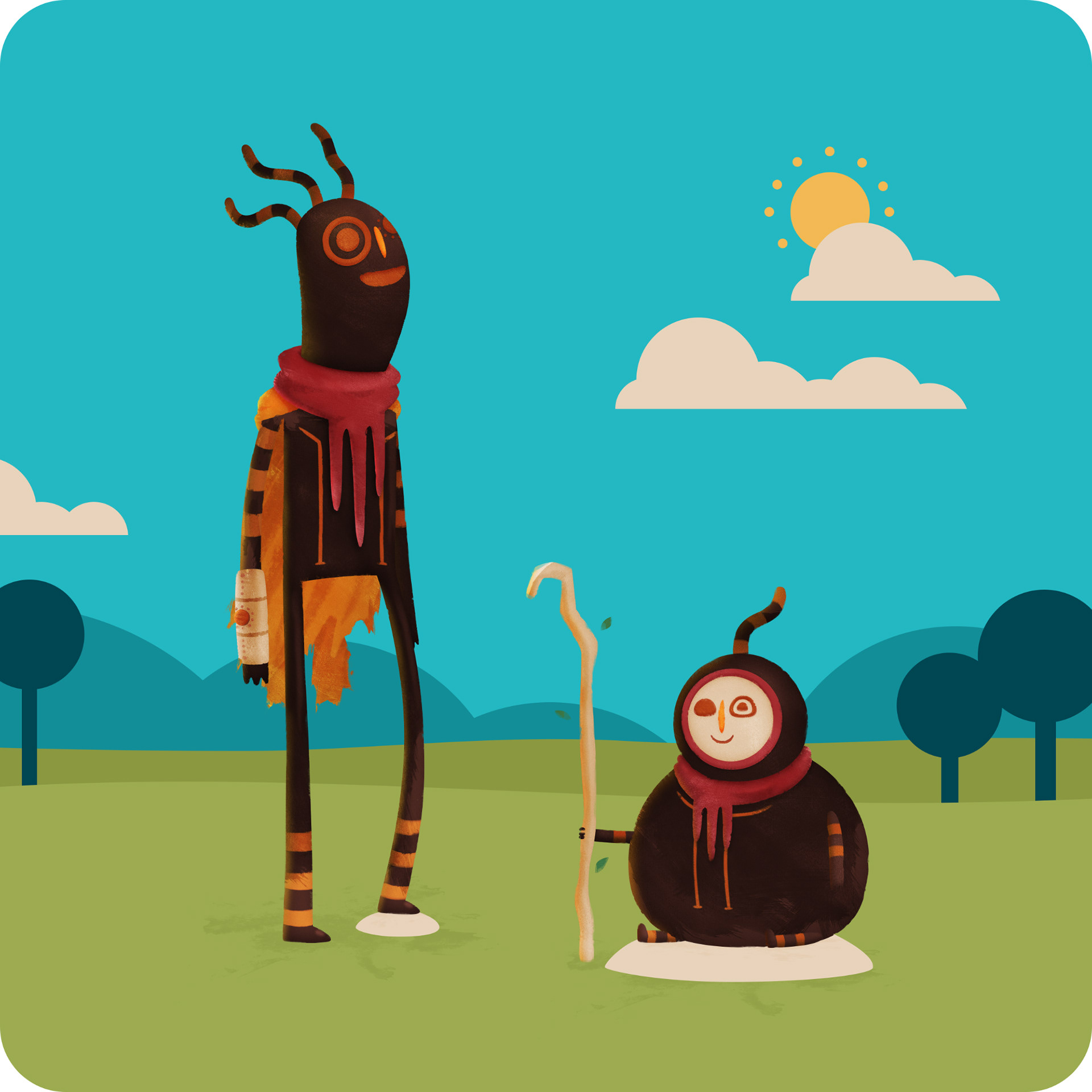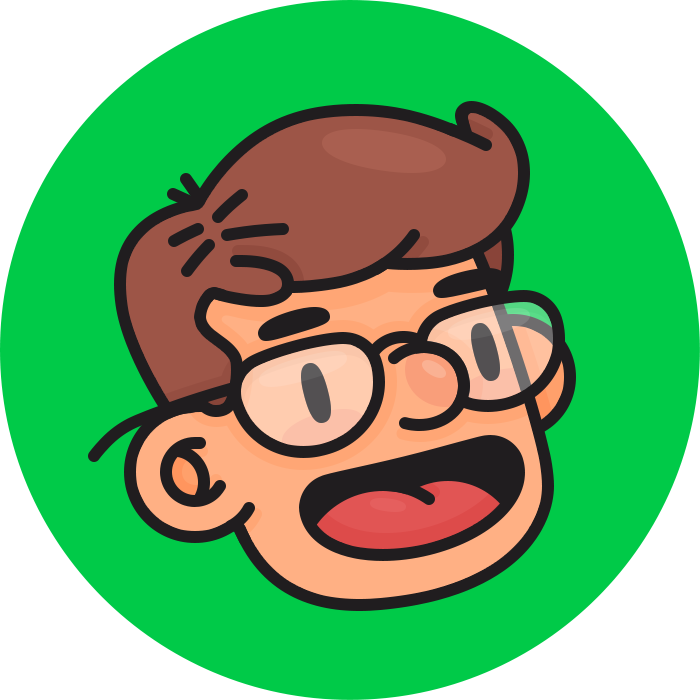Lightning Runners
This online game was for the Heartbeat program, run by the University of Western Sydney.
A game for little (and big) kids, Lightning Runners is an online component of the Heartbeat program. It helps First Nation kids learn more about their culture, healthy eating habits and inspire them to give university a go. They can play it in their own time, in the classroom, or side by side with their parents.
This was one of the first games I ever worked on, and was easily my favourite project during my time at Digital Eskimo, a human-centred design studio, now known as Future Friendly.
I did the concept art, defining the overall style for the game. Along with the character designs and creating all of the level backgrounds, amongst other assets for the game. I also helped out the rest of the team on the project with the overall game design — as I was the resident gamer in the studio and also have a certificate in game design from AIE.
Context
Bit of background
We worked with First Nation elders who helped guide the story, approve the design direction and overall educational outcomes for the game. Much like how Disney formed the Oceanic Story Trust for Moana. A range of educators and other peers in the educational design industry were also consulted, which took the form of several workshops.
Aunty Fran Bodkin, a D’harawal Elder academic, was pivotal in the development of the game. She taught us how central the gathering of different viewpoints is to First Nation approaches to knowledge. This is something they teach in the Heartbeat program — inspiring Aboriginal and Torres Strait Islander primary school students to consider careers in medicine, health and science.
"Western science and Aboriginal traditional knowledge are different ways of understanding the same thing and because we place value on telling stories from different perspectives, we always adapt to different influences and conditions."
AUNTY FRAN BODKIN - D'HARAWAL ELDER
In the game, kids learn important health and cultural messages through their actions in a fantasy-like platformer. They learn about healthy eating habits, social and environmental health, traditional First Nation medicines and the importance of helping others.
We developed the game with Goperhwood Studios, a development studio from North Carolina, who were fantastic and did an amazing job.
STORYTIME
Post-apocalyptic
The story is set in a post-apocalyptic Australia — the sea levels have risen, western civilisation has crumbled and only the indigenous populace remains. These survivors have made a new home for themselves in the ruins of Sydney. Supported by the Lightning Stone (an ancient, powerful source of energy) they are able to power their new home, living in peace.
The two main, and playable characters are sister and brother, Tuktuk and Kuti. They’ve been chosen by their mob to retrieve the Lightning Stone, which has been stolen by the Burra’gorang — a giant evil kangaroo.
Concepts
Defining a world
I started off doing a whole bunch of rough sketches of the characters, objects and environments — exploring styles and the overall feel of the game. Below are the first pieces of concept art I made. The characters ended up staying much the same, with a few details, added and removed, here and there.


Originally, I tried a clean, flat type of background, to really help the characters and interactive objects stand out. But they didn't quite mesh. So I decided to make the backgrounds in the same style of the characters — in this earthy, textured, almost painterly style, which felt right for these characters and story.
CHARACTERS
Style development
Myself and the team wanted to try and depict the human characters in a stylised manner, to help avoid any sort of racist or stereotyped tropes. So we looked at educational and animated shows on the ABC and NITV, to see how they are depicted. They were mostly simplified with tentacle-like hair, making them look like spirits. This really helped us set the art direction.
We tried to make the main characters fairly gender neutral, but most people applied genders to them anyway. So we made Tuktuk the older sister (who was originally a boy) and Kuti the little brother.
In addition to those two, there is a whole cast of supporting characters that you must help throughout the game. There's Gudgad the frog, Mun'dah the red belly black snake, Barrugin the echidna and Wugjatin the bull ant.
If you help them, they will help you defeat the Burra'gorang at the end of the game. If you don't, then you will be overpowered by the Burra'gorang no matter what. We designed it this way to help reinforce the concept of helping out others and team work.
Just like any villain, the Burra'gorang has henchmen. There's a goanna, magpie and snake. I wanted to give them a slightly Mad Max feel, which seemed fitting in this vision of a post-apocalyptic Australia.
Then there is the evil Burra'gorang himself, who was very tricky to get right. You can see his process below. Kangaroo's are hard to draw, just like horses.
There's also general kangaroos bouncing about the landscape. You can kill them and eat them if you're low on health.
However, if you have full health and kill kangaroos, the Dooligah (who were basically big hairy men who ate naughty children) will come out of the shadows and attack you. Teaching children about sustainability and consequences to their actions.
Throughout the game you're helped by an Elder at HQ. She guides you through the game, giving you tips if you're stuck and filling you on the story as you progress through the game.
Below is also an example of the character scale in the game.
Spirits
Summoning spirits
At certain points in the game Tuktuk and Kuti will meet their spirit guides, that enable them to use their powers. Tuktuk can summon Naya, the bee spirit, allowing her to fly. Whereas Kuti gets Wombach, the wombat spirit, who gives Kuti the power to dig through soft ground.
Animation
Running (bouncing) cycles
In addition to all of the character design, I created the running cycles for Tuktuk and Kuti and provided reference for the rest of the characters to Gopherwood to roll out the rest. I was super happy with Kuti's jolly little running, well more like hopping cycle, because he's a liddle beach ball.
LEVELS
Australia
The asset creation and level designs were done by Gopherwood, but I provided them with some style screens for the three main levels, the prologue (which was just a reworking of the splash screen) and boss fight. You can see how much the background style changed from those initial concepts to these final ones.
Each level has its own feel and is set at a particular time of year, such as the wet season or drought. I tried to make each level feel like Australia. I did this through the use of colour and iconic landmarks, like a Telstra-styled phone booth or Sydney train — giving the game a very unique feel.
OBJECTS
Pick me ups
There are also a whole bunch of objects and things that our heroes can pick and use, or need to avoid. Such as, water and fruit for health, or making sure not to pick up lollies, which damage your health. There are also objects for the side quests, for instance, waratah leaves and paperbark to help Mun'dah and Barrugin.
CUTSCENES
Telling a story
In addition to the backgrounds and other bits and bobs, I also did custom illustrations and storyboarded the cutscenes for in the game.
This was such a fun and worthwhile project, and one that I am very proud of. Months after it was finished, it launched at UWS with lots of primary school kids in attendance, and I got to go along to see Aunty Fran give a talk about the game and the Heartbeat program.
Afterwards I sat down with a lot of the kids and watched the play the game from start to finish. The joy and excitement of them playing it still warms my heart today.
If you haven't already, play the game!
If you haven't already, play the game!
Credits
Role: Illustrator + Game Designer
Client: UWS (University of Western Sydney)
Studio: Digital Eskimo
Creative Director: Ben Hoh
2015
